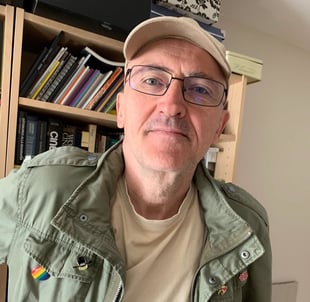

ANIMAFEST SCANNER X | SYMPOSIUM FOR CONTEMPORARY ANIMATION STUDIES | PANEL 4 – SCI-FI IN ANIMATION
DUŠAN VUKOTIĆ AND SCI-FI Midhat Ajanović (Associate Professor, Ph. D. , University West, Trollhättan, Sweden)
PANEL 4 – SCI-FI IN ANIMATION
Theatre &TD
07/06 WED 14:50-14:20
This paper will provide an overview of the film production of the Croatian animation genius Dušan Vukotić in which he showed a strong interest in the science-fiction genre. I will put a certain focus on his last film, which, it seems to me, has not attracted enough attention from animation scholars. The first Vukotić’s film I discuss is Playful Robot (Nestašni robot, 1956). In Playful Robot, Vukotić announced his step towards originality both in terms of expression and thematic plan, creating the character of a good robot which is one of the first such cases in popular culture in general, thus anticipating the later great success of Osamu Tezuka with the series Astro Boy (Tetsuwan Atomu, Japan, 1963), whose opening episode is undoubtedly reminiscent of Vukotić’s work due to its morphological and animation characteristics. It is interesting that many flirting with science fiction, his favorite genre to which he kept returning (Cow on the Moon, in a way also Abra Kadabra, until his last film, Welcome to Planet Earth) actually marked Vukotic’s career. The same applies to his work outside of animation, where, for example, in Guests from the Galaxy (Gosti iz galaksije, 1981), in which Jan Švankmajer was a collaborator, Vukotić tried to join the trend launched by Lucas and Spielberg with their fairy-tale sci-fi films. Even his last film Welcome to Planet Earth (Dobrodošli na planet Zemlja) should be viewed in this context. Namely, as always, Vukotić unmistakably captured the spirit of the times and the central aesthetic features and techniques of current animation production, he applied some of them, and anticipated others to a good extent. Today, it is quite clear that a tectonic change in the development of human civilization took place at the turn of the eighties and nineties. The relationship of political power, geography, economic and technological circumstances were radically changed, which logically all together affected the sphere of art, culture, and spirituality in general. In the area of media and communication, there has been a paradigm shift, which today is called the ‘Visual Turn’ due to the increasingly dominant image compared to other means of communication. However, the very meaning of the animated picture, contained in the creation of what is impossible by other means, has not changed. At the transition between the cinematographic and digital areas, hybridization becomes one of the two basic features of animation. The second, of course, is research into new artistic possibilities and techniques for three-dimensional image presentation. Vukotić perfectly recognized the spirit of the times and correctly assessed the direction in which the art of animation was moving. Changes in technology, distribution, a different audience and cultural context conditioned a new approach in the articulation of ideas with adequate technical solutions.
Midhat Ajanović Ayan is a writer and filmologist born in Sarajevo (Bosnia) in 1959. He studied journalism in Sarajevo and practiced animation in Zagreb Film's Animation Studio (Croatia). Since 1994 he has been living in Gothenburg (Sweden) where he obtained a degree of Doctor of Philosophy in Film Studies as well as a post-doctoral degree. He teaches at various Swedish universities (currently at University West in Trollhättan and writes regularly about film and animation. He has published many books in various genres and in several languages, including nine novels and nine books that deal with cinema, comics and animation.


